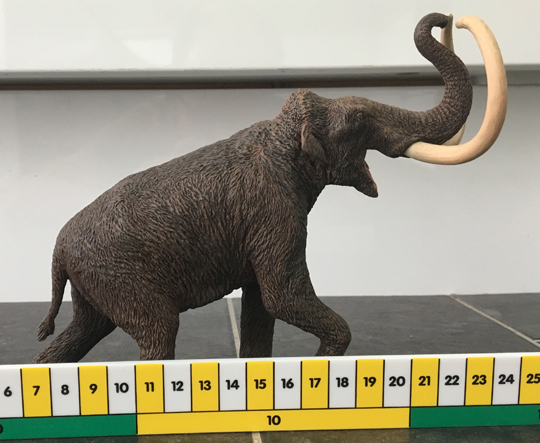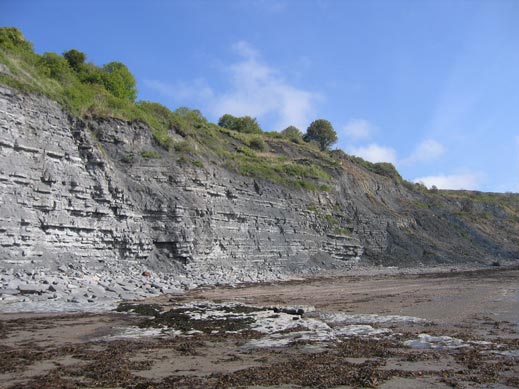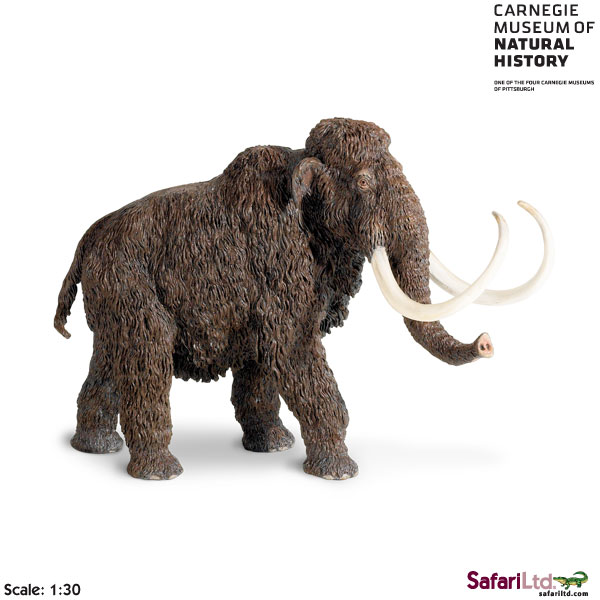Concerns for the Coastal Norfolk Fossil Sites
Experts Fear for Fossils and Safety of Fossil Hunters
Scientists at the Norfolk Museums Service along with British palaeontologists and geology societies have expressed concern over the rise in unscrupulous fossil hunting activities being reported from parts of the Norfolk coast. These famous Pleistocene age deposits have yielded an extensive array of vertebrate fossils including many large mammals such as rhino and elephant.
The West Runton Elephant
One of England’s most important fossil finds, the spectacular West Runton elephant (more correctly termed a Steppe Mammoth – Mammuthus trogontherii), was found in the cliffs. The discovery, the first bones were found in 1990, represents the largest and oldest nearly complete fossil mammoth from the UK. Bones and teeth can still be found on the foreshore but sadly, there has been a rise in reports of fossil hunters digging into the cliffs in a bid to find more specimens.
A Model of a Steppe Mammoth
Picture credit: Everything Dinosaur
The model (above) is an Eofauna Steppe Mammoth.
To view the Eofauna model range: Eofauna Scientific Research Models.
Concern for Norfolk’s Fossil Sites
A spokesperson for the Norfolk Museums Service advised against such excavation, not only would the digging potentially damage any fossil material but as the cliffs were unstable, working so close to the cliffs was very dangerous. He expressed grave concern following reports of a rise in the number of fossil hunters “hacking into the cliff tops”
The Foreshore and Cliffs of Many Locations Require Protection
Picture credit: Everything Dinosaur
Important Fossil Sites
The freshwater Pleistocene deposits and associated Cretaceous chalks yield a large number of different types of fossil. As well as freshwater molluscs and mammal remains from the freshwater beds, the chalk is highly fossiliferous and different types sea urchin and fossil sponges can be found. The picture above shows a typical UK coastal site with fossils. As the cliffs are eroded fossils are exposed.
A team member from Everything Dinosaur commented:
“This part of the Norfolk coast is subject to high levels of erosion, we would urge all fossil collectors to stay on the beach and look for fossils at low tide along the foreshore, the rapidly eroding cliffs are delivering lots of fossil material onto the beach area and this is a wonderful location for a family fossil hunt. However, please don’t dig into the cliffs and we urge all visitors to follow the fossil collecting code.”
For an article on the fossil collecting code and a guide to safe collecting: Everything Dinosaur’s Guide to Fossil Collecting Safely.
Register Fossil Finds with the Norfolk Museums Service
A partial Mammoth tooth was found nearby last month and no doubt other finds will be reported over the summer at this popular tourist attraction. Palaeontologist Dr. Waterhouse of the Norfolk Museums Service and the leader of the Cromer Forest-bed Fossil Project reminded fossil hunters that it was good practice to report finds to the Norfolk Museum Service, the museum at Cromer just a few miles from West Runton, was a good place to take any fossil finds and team members from the Norfolk Museums Service would be happy to assist with identification. As Mammoth fossils, especially tusks and teeth are very popular with collectors, it is likely that many of the overzealous fossil hunting activities have been driven by the high prices such fossils make on auction sites.
A Model of a Woolly Mammoth (M. primigenius)
Picture credit: Everything Dinosaur
Dr Waterhouse said:
“Norfolk is the best place in the country and probably Europe to find Mammoth remains because they went through about six sets of teeth in their lifetime, so there is a lot more teeth than there were Mammoths. Something that I think needs highlighting is poor and even dangerous fossil collecting by people hacking into the cliffs at places like West Runton. Ethical collecting is high on my agenda, and also recording fossil finds as part of the Cromer Forest-bed Fossil Project, so that important scientific information isn’t lost forever.”
At Everything Dinosaur we echo the views of Dr Waterhouse and we urge fossil hunters to take care and to abide by the fossil collecting code as well as local bye laws and regulations.
Visit Everything Dinosaur’s website: Visit Everything Dinosaur.




